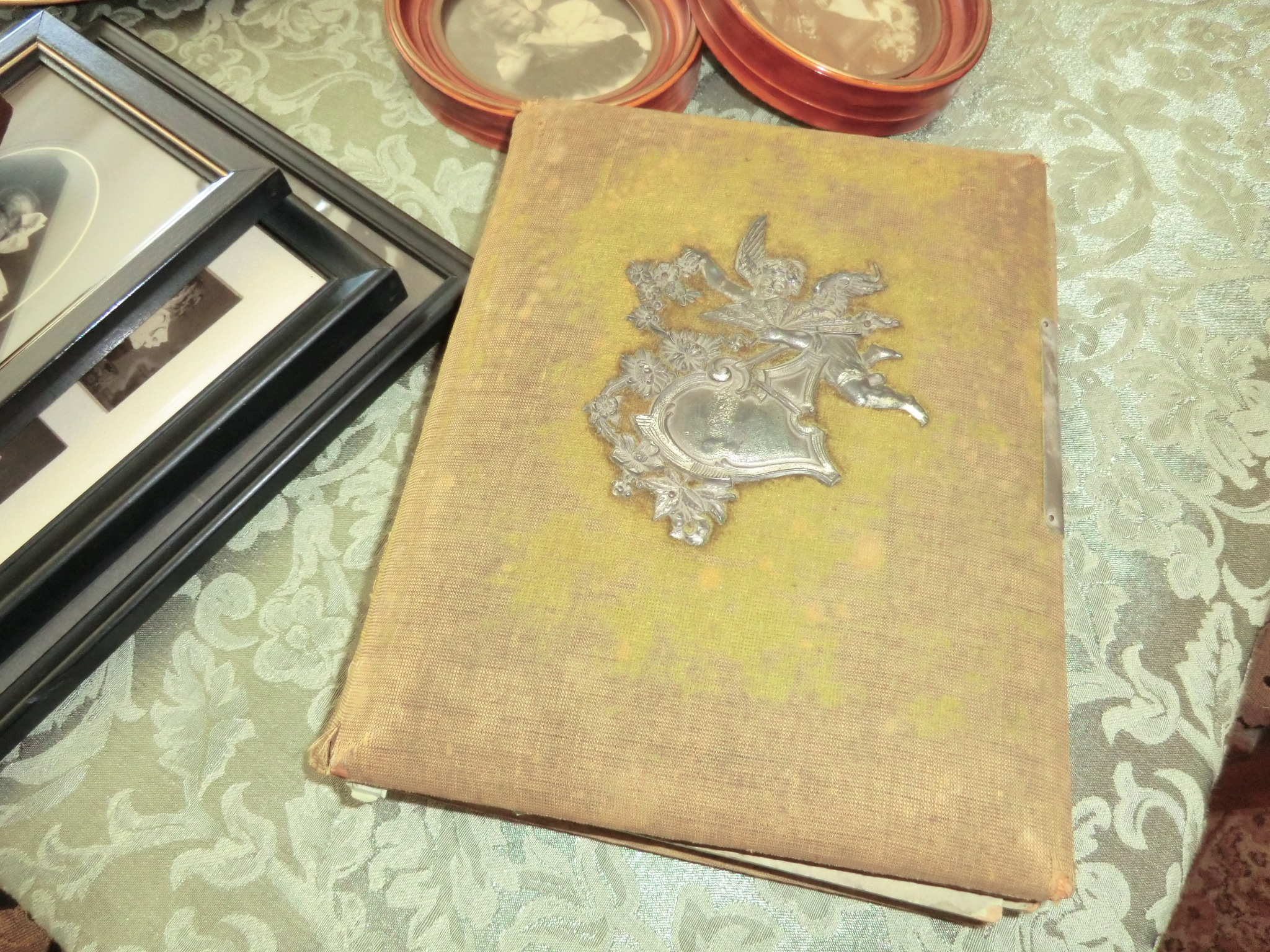by Lisa Cooke | Apr 3, 2015 | 01 What's New, African-American, Ancestry, Australian, British, Canadian, Cemeteries, FamilySearch, Findmypast, Military, Records & databases, United States
Each Friday we share a list of selected new genealogy records online. Watch for records in which your ancestors might appear–and get inspired by the  kinds of records that may be out there waiting for you to discover. This week: Australian cemetery records, British military officer deaths, various U.S. passenger lists and North Carolina marriage records.
kinds of records that may be out there waiting for you to discover. This week: Australian cemetery records, British military officer deaths, various U.S. passenger lists and North Carolina marriage records.
AUSTRALIAN CEMETERY RECORDS. Two million indexed records have been added to the free Australia, Queensland Cemetery Records, 1802–1990 dataset at FamilySearch.org. According to the site, “The records include an index which combines several other indexes, cemetery transcriptions, burial and other records from cemeteries in Queensland….Cemetery records are especially helpful for identifying ancestors who were not recorded in other records, such as children who died young or women. They may also give clues to finding more information. In Australia, the first cemetery is reported to have been in Sydney in 1788.”
BRITISH MILITARY OFFICER DEATHS. FindMyPast’s new dataset, Royal Artillery Officer Deaths 1850-2011, lists the details of over 17,000 commissioned officers who were killed or died during the campaigns in Kosovo, Bosnia, Borneo and Iraq as well as the First and Second World Wars. It is estimated that since the regiment’s formation in May 1716, over 2.5 million men and women have served with the regiment. Each record includes a transcript of details found in the original records.
US PASSENGER LISTS. Browsable images were added to several existing US immigration records. Click here (and then scroll down) to view a table that has links directly to these datasets:
- For San Diego, CA:Airplane Passenger and Crew Lists, 1929–1954 and an apparently segregated Chinese Passenger and Crew Lists, 1905–1923;
- San Francisco, CA Passenger Lists, 1893–1953;
- Key West, FL Passenger Lists, 1898-1945;
- Minnesota Passenger Lists, 1910-1923;
- New York City, NY Passenger and Crew Lists Soundex (meaning an index based on how a name sounds), 1887-1921; (this is actually a new image collection)
- North Dakota Manifests of Immigrant Arrivals, 1910-1952 (this is also new).
NORTH CAROLINA (US) COUNTY MARRIAGES, 1741-2011. This new dataset on Ancestry “includes images of marriage bonds, licenses, certificates, and registers from 87 different counties.” According to an Ancestry blog post, some marriages have multiple records in this collection, like a bond and an indexed marriage record. This record set may be particularly useful for those tracing African-American marriages, as they “reference the joining of couples living as man and wife dating back to 1820, and possibly earlier…. Sometimes they also include the names of their former owners.” There’s a free, similar-looking dataset at FamilySearch, but the dates aren’t as extensive (it covers 1762-1979).
 Tip: When searching within record sets like these, read the record collection description! Sometimes you are just seeing a partial collection that is being updated on an ongoing basis. Some years or locales may be missing from an otherwise complete record set.
Tip: When searching within record sets like these, read the record collection description! Sometimes you are just seeing a partial collection that is being updated on an ongoing basis. Some years or locales may be missing from an otherwise complete record set.
When you have questions that aren’t answered in the record collection description online, Google them! Use keywords like the type of record (“marriage records”) and the missing locale (“Burdett County”) to see whether other sites can lead you to these records or confirm that they don’t exist. Learn more about advanced Google searching for genealogy in the fully-updated 2nd edition of The Genealogist’s Google Toolbox by Lisa Louise Cooke.
by Lisa Cooke | Apr 17, 2015 | 01 What's New, Ancestry, FamilySearch, images, Records & databases, United States
 Do you have family from Puerto Rico? Newly-searchable at FamilySearch.org are Puerto Rico Civil Registrations. Ancestry published these last year for their subscribers. Ancestry describes this as their “largest single collection of Puerto Rican records.”
Do you have family from Puerto Rico? Newly-searchable at FamilySearch.org are Puerto Rico Civil Registrations. Ancestry published these last year for their subscribers. Ancestry describes this as their “largest single collection of Puerto Rican records.”
According to FamilySearch, “The civil registration records in Puerto Rico are an excellent source for genealogical research after 1885. Important genealogical data can be found in these records; see below. The data may even help to find information about an earlier generation.” They include birth, marriage and death records.
The description on FamilySearch indicates that records go back to 1805. But other hints (and a comparison to the Ancestry dataset) indicate that most of the records are for 1885 and later, just like Ancestry’s. Civil registration didn’t start in Puerto Rico until 1885 (before that, look to Catholic church records for BMD data). Of course, like many records, they may contain information about family dates and relationships from earlier in that person’s life.
 Those who know about Puerto Rico’s connection to the U.S. may wonder why Puerto Rico had civil registrations at a time that U.S. states and territories did not. Puerto Rico was actually a colony of Spain when civil registration started. Only after the Spanish-American War of 1898 did Puerto Rico become a U.S. protectorate.
Those who know about Puerto Rico’s connection to the U.S. may wonder why Puerto Rico had civil registrations at a time that U.S. states and territories did not. Puerto Rico was actually a colony of Spain when civil registration started. Only after the Spanish-American War of 1898 did Puerto Rico become a U.S. protectorate.
by Lisa Cooke | Nov 5, 2014 | 01 What's New, Beginner, Census, Records & databases

New York Genealogy
Good news for those who had relatives in New York in the 1860s: the 1865 New York State Census is now searchable online at FamilySearch.org.
Just five years earlier, the 1860 U.S. federal census counted nearly four million people in this its largest state. New York claimed two of the three biggest U.S. cities: New York City and Brooklyn, with a combined population of over a million.
According to FamilySearch, “This collection contains most of the 1865 New York state census records still in existence. Ten schedules were filed for each locality, including population, marriages, and deaths schedules. The population schedule included the name, age, birthplace, and occupation of each household member. Most counties are covered, but some records were destroyed. The record is a printed form that was filled in by hand by the enumerator. The records are usually buy bipolar medication online arranged by county and town.”
Several counties are missing from this dataset. But it’s got a hefty 2.5 million records, over 60% of the population as counted in 1860. So check it out if you have Empire State ancestors!
Didn’t know New York conducted state censuses? Check out these additional resources:
- Ancestry.com has a database of New York State censuses for 1880, 1892 and 1905. The 1892 census is especially critical because of the 1890 U.S. federal census is almost entirely lost.
- Learn more about U.S. state censuses and other special censuses in Episode 10 of our Family History Made Easy podcast. (This episode is the second of a three-part series on using census records: click here for the full list of episodes of this step-by-step free genealogy podcast.)
by Lisa Cooke | Aug 23, 2014 | 01 What's New, Conferences, Jewish
The world of genealogy is so huge that one person can’t possibly know everything. That’s why I’m always glad to hear from readers who research  different ancestries. Recently I heard from Diane Goldman in Bethesda, MD, USA, who wrote in about her favorite Jewish genealogy resources:
different ancestries. Recently I heard from Diane Goldman in Bethesda, MD, USA, who wrote in about her favorite Jewish genealogy resources:
“Dear Lisa,
I love listening to the tips and interviews on your podcast. So I’m excited to send a recommendation your way. You haven’t broadcast much on Jewish genealogy, but there are some fabulous resources.
- Salt Lake City just welcomed the latest conference of the International Association of Jewish Genealogy Societies. The last 2 conferences were in Boston and Paris; next year’s will return to Jerusalem. (My tip: Use their website’s member list to find a Jewish genealogy organization for you–either one near you or one that focuses on the right region of the world for your family.)
- A conference highlight is always the update for JewishGen.org, begun by Texan Susan King and now associated with New York’s Museum of Jewish Heritage. JewishGen’s grown from a bulletin board linking researchers across the globe to a resource complex featuring personal stories, databases, and digitized materials. Each regional/topical Special Interest Group features its own wealth of resources, often the only access to materials of a particular country or of a region now split among several countries, such as the Galician or Sub-Carpathian group.
- JewishGen also hosts the independent LitvakSig (Lithuanian data) and Jewish Records Indexing (JRI)-Poland. The latter has mushroomed from an individual’s medical research to an invaluable resource complex: ‘The largest fully-searchable database of indexes to Jewish vital records accessible online. 4 million records from more than 500 Polish towns.'”
Thank you, Diane! It’s a pleasure to share these resources with Genealogy Gems readers.
by Lisa Cooke | Mar 19, 2014 | Beginner
 Free Family History has a nice ring to it!
Free Family History has a nice ring to it!
Did you know you don’t have to pay for a subscription to anything to be able to start learning more about your family history?
Start to find your family history for free by asking the four questions listed below.
1. What do you already know?
Chances are that you know something about your family already. The most important facts we start with are our relatives’ names and their dates and places of birth, marriage(s) and death. These facts can help you later to distinguish between records about our relatives and others with the same name.
Write down what you know about your “direct ancestors”–your parents, grandparents, great-grandparents, etc.–on a family tree chart like this free fill-in pdf format (these are also called pedigree charts). Then use family group sheets like this one to organize facts about each individual couple (this is where you can list all the children your grandparents had, for example).
2. What do your relatives know?
After filling out what you can, show your family tree chart and family group sheets to other relatives. Ask them if they can fill in some blanks. Remember these tips:
- Try to include a little note about who tells you each piece of information.
- Someone may dispute what you find. Everyone’s memory of an event is different. Don’t argue. Treat their information with respect:. Write it down. Then ask politely if they have any documentation you could see, or why they believe something to be true (who told them, etc).
- Ask whether anything is missing from your charts: a grandparent’s second marriage, a stillborn child or even whether someone’s name is accurate. You or others might know someone by a nickname or middle name.
- Be sensitive to information that might be confidential or not generally well-known, like a birth date that doesn’t appear more than 9 months after a wedding, or a first marriage. Consider asking living relatives if it’s okay for you to share certain facts. Consider only showing part of your charts to a relative.
3. What’s in the attic (or anywhere else)?
We can often find family documents in our own homes and those of our relatives. Look in attics, basements, storage units, safe deposit boxes and  safes, filing cabinets, photo albums, scrapbooks, shoeboxes and other places where papers and memorabilia may be tucked. You’re looking for things like:
safes, filing cabinets, photo albums, scrapbooks, shoeboxes and other places where papers and memorabilia may be tucked. You’re looking for things like:
- certificates of birth, baptism, marriage or death;
- obituaries or other news articles, like anniversaries;
- funeral programs, wedding and birth announcements;
- photos with names or other notes on the backs;
- insurance, pension, military or other paperwork that may mention births or deaths or beneficiary information;
- wills and home ownership paperwork–even outdated ones;
- a family Bible.
When you find family names, relationships, dates and places in these documents, add them to your charts.
4. What’s available online for free?
There are two major types of family history information online: records and trees. Records are documents created about specific people, like obituaries, birth certificates and all those other examples I just mentioned. Trees are a computerized form of other people’s family tree charts and group sheets. It can be tempting to just look for someone else’s version of your family tree. Eventually you will want to consult those. But other people’s trees are notoriously full of mistakes! Instead, start by looking for records about the relatives you already have identified.
I suggest that you start your search at FamilySearch.org because it’s totally free. At most other sites, you’ll have to subscribe or pay to see all the search results. At FamilySearch, you just need to create a free user login to get the most access to their records.
After logging in, click Search. Choose a relative you don’t know a lot about. Search for that name. Use the different search options to add more information–even a range of dates and a state/province or country–so you don’t have to wade through thousands of near-matches.
The most common records to find on FamilySearch for many countries are census and vital records.
- A census is a tally of residents, voters or another target population. Entries often include details about a household: who lived there, how they were related, how old they were, where they were born, etc. You can often extract family information from census listings, though some things (like ages or name spellings) may not be totally accurate.
- Vital records are official records of someone’s birth, marriage or death. In these, you’ll often find important dates and places as well as names of parents, spouses or others important to the family. They aren’t always totally accurate, and you may only be able to see an index of the record (not the actual document).
As you find search results, compare what they say to what you’ve already learned. How likely is it that this record belongs to your family? Consider how many people seem to have the same name in that location and time period (for example, how many are mentioned in the 1880 U.S. census in that state?). Don’t just look at the search results list: click through to look at the full summary of the entry and, if you can, the original record itself. You may find additional details in these that can confirm whether this record belongs to your relative. You may even find out about new people: your great-grandparents’ parents, for example. Write it all down or begin building a family tree right there on the FamilySearch website (because it’s totally free: learn more about that here.) And one of the greatest keys to long term success is citing your sources. It’s imperative that you make careful note of where you got the resource so that you can find and refer to it again later, and back up your research if it is ever called into question.
 People who research their family history often describe it as a puzzle with lots of different pieces. You will need to assemble a lot of puzzle pieces–information about each relative–to begin to see the “bigger picture” of your family history. You’ll start to sense which pieces may belong to a different family puzzle. You may put together a picture that is unexpected, or has some shadows and sadness. There will likely also emerge heroic, beautiful and touching images.
People who research their family history often describe it as a puzzle with lots of different pieces. You will need to assemble a lot of puzzle pieces–information about each relative–to begin to see the “bigger picture” of your family history. You’ll start to sense which pieces may belong to a different family puzzle. You may put together a picture that is unexpected, or has some shadows and sadness. There will likely also emerge heroic, beautiful and touching images.
Ready to learn more?
Up next, read:
7 Great Ways to Use Your iPad for Family History
How to Find Your Family Tree Online
Best Genealogy Software
Search the SSDI for Your Family History
 kinds of records that may be out there waiting for you to discover. This week: Australian cemetery records, British military officer deaths, various U.S. passenger lists and North Carolina marriage records.
kinds of records that may be out there waiting for you to discover. This week: Australian cemetery records, British military officer deaths, various U.S. passenger lists and North Carolina marriage records. Tip: When searching within record sets like these, read the record collection description! Sometimes you are just seeing a partial collection that is being updated on an ongoing basis. Some years or locales may be missing from an otherwise complete record set.
Tip: When searching within record sets like these, read the record collection description! Sometimes you are just seeing a partial collection that is being updated on an ongoing basis. Some years or locales may be missing from an otherwise complete record set.



 different ancestries. Recently I heard from Diane Goldman in Bethesda, MD, USA, who wrote in about her favorite Jewish genealogy resources:
different ancestries. Recently I heard from Diane Goldman in Bethesda, MD, USA, who wrote in about her favorite Jewish genealogy resources: Free Family History has a nice ring to it!
Free Family History has a nice ring to it! safes, filing cabinets, photo albums, scrapbooks, shoeboxes and other places where papers and memorabilia may be tucked. You’re looking for things like:
safes, filing cabinets, photo albums, scrapbooks, shoeboxes and other places where papers and memorabilia may be tucked. You’re looking for things like: People who research their family history often describe it as a puzzle with lots of different pieces. You will need to assemble a lot of puzzle pieces–information about each relative–to begin to see the “bigger picture” of your family history. You’ll start to sense which pieces may belong to a different family puzzle. You may put together a picture that is unexpected, or has some shadows and sadness. There will likely also emerge heroic, beautiful and touching images.
People who research their family history often describe it as a puzzle with lots of different pieces. You will need to assemble a lot of puzzle pieces–information about each relative–to begin to see the “bigger picture” of your family history. You’ll start to sense which pieces may belong to a different family puzzle. You may put together a picture that is unexpected, or has some shadows and sadness. There will likely also emerge heroic, beautiful and touching images.